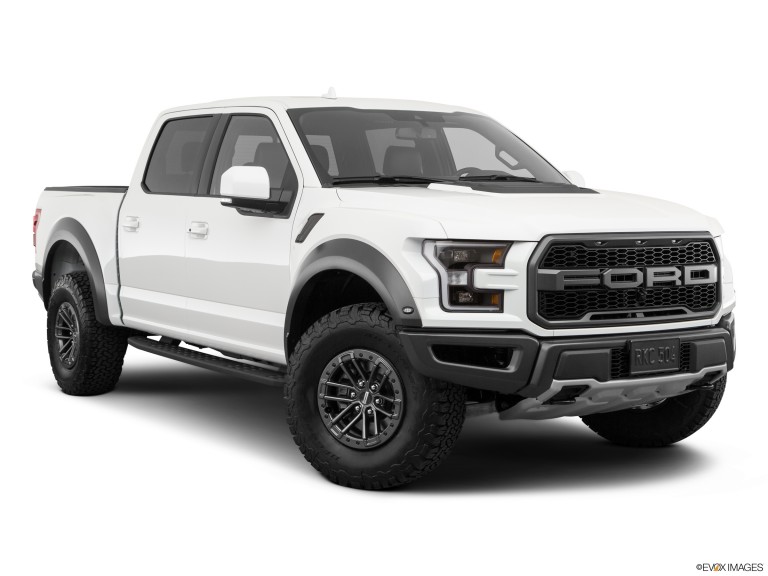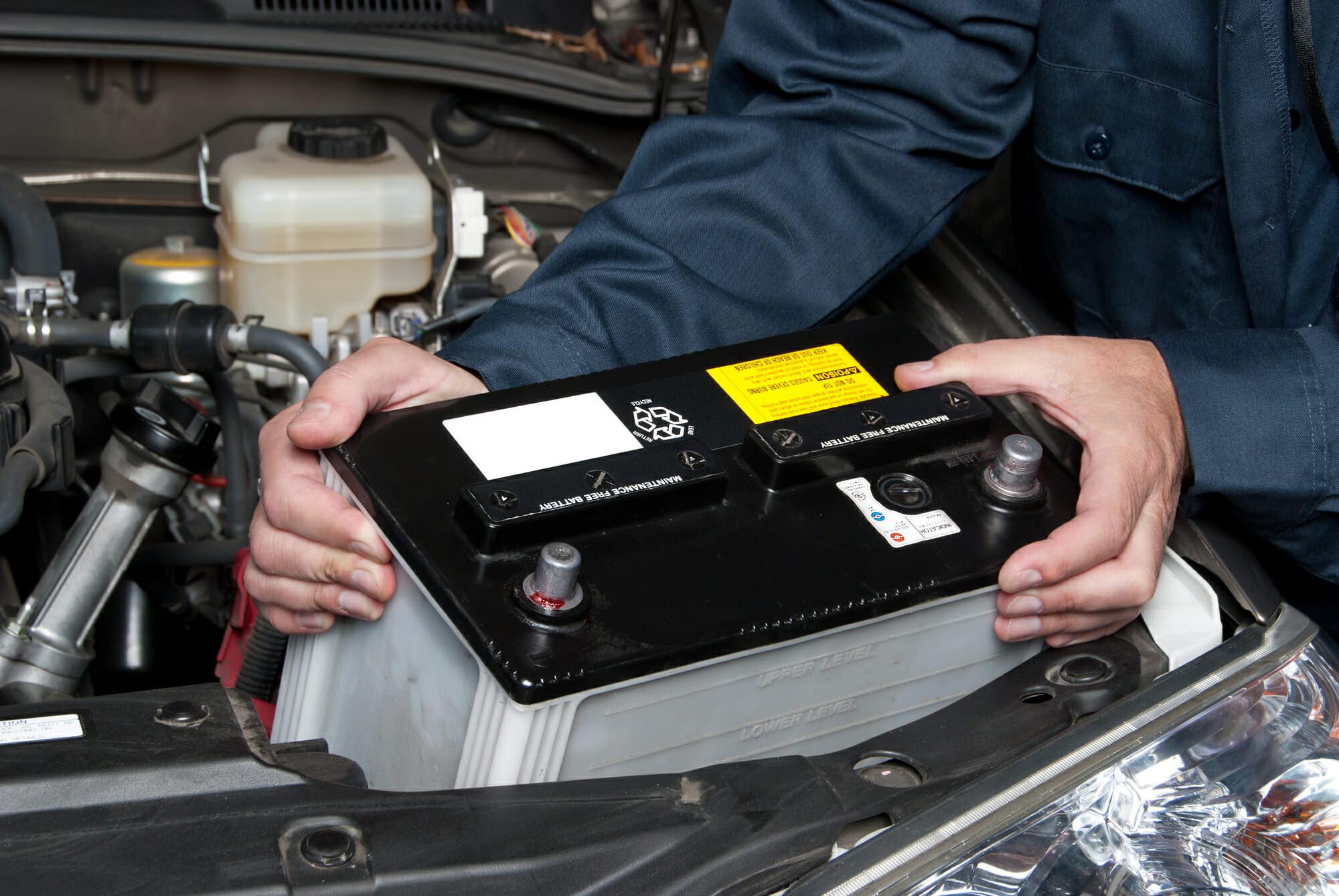When you’re buying a full-size truck, you want to know that it’ll provide you with reliable, dependable service. Of course, part of that is making sure your battery will reliably start your Ford F-150‘s engine to keep you moving. But knowing you need a new battery and which one is best are two separate issues.
What’s the best battery for a Ford F-150?
The 13th Generation Ford F-150 takes three different batteries across its many engines, the H6 with 760 cold-cranking amps, the H7 with 800 cold-cranking amps and the H8, specifically for the diesel, with 850 cold-cranking amps.

If that sounds like a lot of technical jargon, that’s okay. We’ll explain battery groups, battery types and battery sources below. When you’re working with Vehicle History’s extensive information database, you know you’re getting information from top experts in the automotive industry.
Battery Group Sizes Explained
Among the topics discussed when you’re trying to find a replacement battery for your Ford F-150 is the battery group. This term refers to the exterior dimensions of your battery as well as the location of the terminals and the amount of power it can deliver. But why is this important?
To start your vehicle, your F-150 requires a minimum amount of power that must be delivered quickly, as well as to run lights, audio and other electronics on a limited basis when your engine isn’t running. The easiest way to make sure these needs are met is by replacing the battery with the same group size.
Battery group sizes are alphanumerical designations assigned by the Battery Council International (BCI). You should always use a battery approved for your vehicle, but many vehicles can accommodate batteries from a range of different group sizes. Use a replacement guide to make sure you’re getting the right one.
Among the reasons for using battery groups is your vehicle’s frame and hood consist of conductive sheet metal. Installing a battery that’s too tall can allow the underside of the hood to inadvertently contact both terminals, creating a short and causing a dangerous situation.
The hold-down for your battery can create another issue. Batteries from a different battery group size may be too tall, wide or short for your hold-down to work properly. This can allow your battery to shift while in operation, causing it to damage cables, contact moving parts or cause starting problems.
If you do put very careful thought and take careful measurements, you may be able to move to a different battery group size, such as adding a larger deep-cycle battery to a construction or emergency-response vehicle, providing extra capacity. In many situations, adding a second battery is a better choice.
Lead-Acid, Lithium-Ion, SLI or Deep Cycle?
Looking past battery groups, another aspect of what type of battery you want to buy is what kind of chemicals are used to store the chemical current. Typically, these are in two categories: lead-acid, which are your typical car batteries, and lithium-ion, which are becoming available as price drops.
As one of the earliest, most widely used rechargeable batteries, lead-acid batteries were invented in 1859. Featuring a high power density, these batteries can release lots of power quickly, making them ideal for starting engines. They have several cells with positive and negative plates, electrolytes and separators.
There are different lead-acid battery types, such as gel, wet-flooded, calcium-calcium, AGM and AGM spiral. The use of lead makes them heavy, between 30-50 pounds, and running this type of battery to zero charge causes significant damage, causing the battery to fail prematurely.
Why? When lead-acid batteries discharge completely, the chemistry change causes lead sulfate to build up. It’s for this reason that you should periodically put a full charge on your Ford F-150 battery to prevent this problem. It’s also why these batteries are stored charged, though they’ll lose charge with time.
First available commercially in the 1970s, lithium-ion batteries have come down in price to be affordable for automotive use. They weigh a third of that of comparable lead-acid batteries, making them work well for sports cars and motorcycles, with a very high energy density.
Lithium-ion batteries work by moving lithium ions from the negative electrodes to positive during discharge, returning during charging. They’re capable of discharging 80% of their power, compared to 30-50% for lead-acid batteries, before the battery is depleted.
However, their output can drop faster as temperatures drop, making them a poor choice for cold climates. They’re expected to last the vehicle’s lifetime rather than requiring regular replacement, but improper charging can cause individual cells to fail.
How do SLI or deep cycle batteries fit in? Typically referring to lead-acid batteries, starting, lights and ignition (SLI) batteries only handle those systems, while deep cycle batteries allow deeper discharge of the battery between charging. If you use electronics with the engine off, deep cycles prevent battery wear.
OEM vs Aftermarket: What’s the Difference?
The last difference you’ll need to look at is an original manufacturer’s equipment (OEM) or aftermarket battery. What’s the difference between these battery types and how will it impact your vehicle’s reliability and performance? Is the difference really that big of a deal?
In a word, absolutely! Though size, type and deep cycle versus SLI can be a big difference, there’s also a difference in manufacturing. This can include water quality for the electrolyte, the sturdiness of the case, the thickness of the electrodes and similar issues.

Generally speaking, OEM will be of higher quality because the manufacturer doesn’t want to gain a reputation for producing vehicles with poor-quality batteries. For this reason, the batteries they use have a higher rejection rate to ensure their reputation is protected.
This can be something as simple as having too many or too few parts per million of a compound in the electrolyte water or minuscule differences between the anode and cathode electrode plates that impact battery capacity or any number of other small differences.
For this reason, the professionals at Vehicle History recommend sticking with OEM batteries, because we feel that their higher overall quality is worth the higher investment. However, with the higher quality is a higher price tag, around half again as expensive as their aftermarket counterparts.
Comparatively, an aftermarket battery for your Ford F-150 will still meet the basic specifications of an OEM battery, but it may not reach the same exacting standards that Ford uses when accepting or rejecting a battery. It will still work fine at the beginning but may have issues develop.
But what type of problems? Aftermarket batteries may not start as many times, may not hold a charge as well, or could have cells fail. Issues such as these must be taken into consideration. However, the lower price tag, often 60% of OEM, may make you decide in their favor.
If You Do Go Aftermarket, Here’s What We Suggest
If aftermarket just sounds like too good of a deal, here are some of the best aftermarket batteries recommended for the Ford F-150: the Odyssey, due to its 10-year expected service life, the Optima YellowTop for a good dual-purpose battery, and the Optima RedTop for the harshest overall starting conditions.